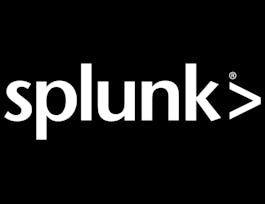In this course, you will learn how to calculate co-occurrence between fields and analyze data from multiple datasets, increase your knowledge of searching and learn how to work with multivalue data. In addition, you will learn tips and tricks to improve search performance using accelerations.



Splunk Search Expert 103
This course is part of Splunk Search Expert Specialization

Instructor: Splunk Instructor
Sponsored by Louisiana Workforce Commission
2,549 already enrolled
(43 reviews)
What you'll learn
Use specific commands to calculate co-occurrence between fields and analyze data from multiple datasets.
Understand how components of a search are broken down and processed across the Splunk data pipeline and how to troubleshoot searches.
Manipulate, evaluate, and analyze multivalue data and create multivalue fields in search with multivalue eval commands and functions.
Improve search performance by understanding search best practices, accelerating repots and data models to optimize frequently accessed data.
Skills you'll gain
- Data Manipulation
- Analytics
- Splunk
- System Monitoring
- Statistical Methods
- Data Analysis
- Performance Tuning
- Applied Mathematics
- Ad Hoc Reporting
- Data Analysis Software
- Statistical Analysis
- Data Processing
- Correlation Analysis
- Business Analytics
- Mathematics and Mathematical Modeling
- Ad Hoc Analysis
- Data Wrangling
- Application Performance Management
- Statistics
- Data Transformation
Details to know

Add to your LinkedIn profile
4 assignments
See how employees at top companies are mastering in-demand skills

Build your subject-matter expertise
- Learn new concepts from industry experts
- Gain a foundational understanding of a subject or tool
- Develop job-relevant skills with hands-on projects
- Earn a shareable career certificate


Earn a career certificate
Add this credential to your LinkedIn profile, resume, or CV
Share it on social media and in your performance review

There are 4 modules in this course
This module is for users who want to learn how to calculate co-occurrence between fields and analyze data from multiple datasets. Topics will focus on the transaction, append, appendcols, union, and join commands.
What's included
10 videos2 readings1 assignment
This eLearning module gives students additional insight into how Splunk processes searches. Students will learn about Splunk architecture, how components of a search are broken down and distributed across the pipeline, and how to troubleshoot searches when results are not returning as expected.
What's included
9 videos2 readings1 assignment
This module is for users who want to become experts on searching and manipulating multivalue data. Topics will focus on using multivalue eval functions and multivalue commands to create, evaluate, and analyze multivalue data.
What's included
20 videos2 readings1 assignment
This module is for users who want to improve search performance. Topics will cover how search modes affect performance, how to create an efficient basic search, how to accelerate reports and data models, and how to use the tstats command to quickly query data.
What's included
7 videos2 readings1 assignment
Instructor

Offered by
Why people choose Coursera for their career




Learner reviews
43 reviews
- 5 stars
79.06%
- 4 stars
18.60%
- 3 stars
0%
- 2 stars
2.32%
- 1 star
0%
Showing 3 of 43
Reviewed on Jun 23, 2022
Excellent materials, I totally recommend this course
Recommended if you're interested in Information Technology

Splunk Inc.

Splunk Inc.

Splunk Inc.

Splunk Inc.

Open new doors with Coursera Plus
Unlimited access to 10,000+ world-class courses, hands-on projects, and job-ready certificate programs - all included in your subscription
Advance your career with an online degree
Earn a degree from world-class universities - 100% online
Join over 3,400 global companies that choose Coursera for Business
Upskill your employees to excel in the digital economy


